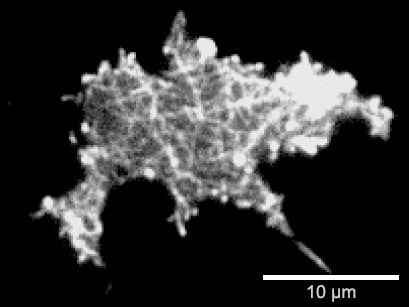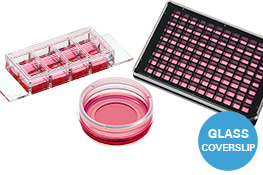Total Internal Reflection Fluorescence (TIRF)
Applications:
TIRF is a fluorescence-based technique used to image the processes that occur in and near the membrane of living cells. Although TIRF cannot be used to visualize structures located deep within a specimen, it allows for near-membrane imaging close to the interface with a high signal-to-noise ratio. TIRF is very useful visualizing membrane processes, such as receptor-ligand interactions, endocytosis, viral infection, or cell adhesion to surfaces.

Surface-near F-actin network of a Dictyostelium discoideum DdLimE-GFP cell. TIRF Live cell imaging on a Glass Coverslip #1.5H.
Principle:
For TIRF, two optical media with different refractive indices, such as water (nD=1.33) and glass (nD=1.52), are needed. If the total internal reflection of incident light occurs at the interface of these media, an evanescent field is created. This evanescent field is an area in which the totally reflected light is still able to excite fluorophores. It extends about 100–200 nm deep into the specimen, leading to the excitation of fluorophores. Only the fluorescent events occurring at the section of the specimen close to the glass/sample interface are then visualized.

The principle of TIRF microscopy.
ibidi Solutions:
|
|





